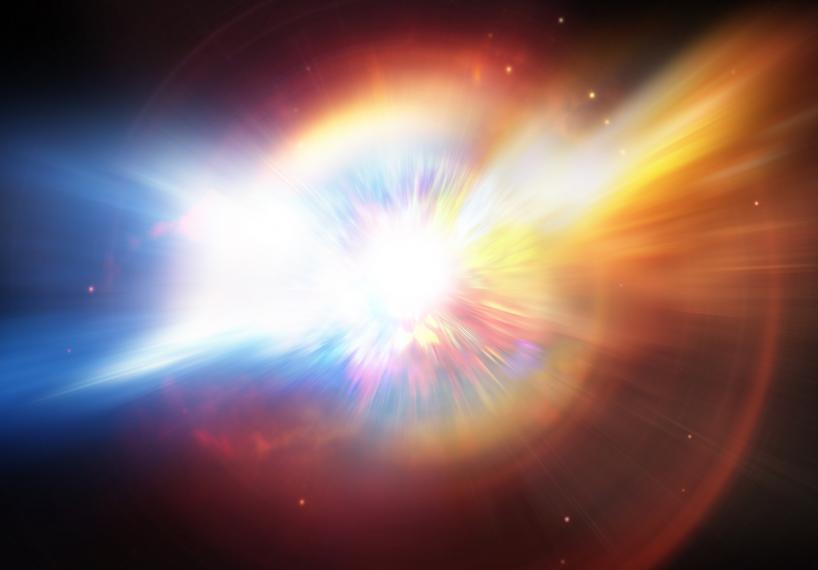Rules of Attraction

Researchers calculate the weight of neutron stars, the strongest magnets in the universe.
When a star larger than the sun reaches the end of its life, it explodes—blasting its outer layers into space and collapsing into itself. Gravity progressively draws the collapsed core into itself, until it is so dense that a single teaspoon of the material weighs more than one billion tons (approximately the same weight as Mount Everest). This compressed core is called a neutron star and it has some intriguing characteristics. Neutron stars produce gravitational fields that are two billion times stronger than Earth’s gravity, and they are the most powerful magnetic fields in the universe. As a result, if anything gets too close to a neutron star it would be pulled in at high speed and would likely disintegrate. Understanding these extraordinary objects is a challenge for physicists, not only because they are drastically different from anything on our planet, but also because they are light-years away.
University of Guelph physics professor Alexandros Gezerlis and his research team recently shed new light on the properties of neutron stars. The team calculated the first near-exact prediction of the effective mass of neutron star material. The effective mass tells us how much the neutron star’s particles weigh when they are tightly packed and interacting with each other. This is an important quantity because the particles would have a different mass if they were not interacting with each other. The team’s approach was to build a neutron star using the power of computers. They developed a computer simulation of a few dozen neutron particles at a time to predict how billions of them would behave together. They used supercomputers to model the behaviour of one particle as it strongly interacts with many other particles. From this, they were able to calculate the effective mass of neutron star material with high accuracy.
“No one has calculated this important characteristic of neutron stars as accurately as we have,” says Prof. Gezerlis. “Our results are precise enough to be considered synthetic data; they can be used to further study distant stars, even though we cannot directly study them here on earth.”
This work was supported by the Natural Sciences and Engineering Research Council of Canada (NSERC), the Canada Foundation for Innovation (CFI), and the former Ontario Ministry of Research, Innovation, and Science.
Buraczynski M, Ismail N, Gezerlis A. Nonperturbative Extraction of the Effective Mass in Neutron Matter. 2019 Apr 19. Phys. Rev. Lett. doi: 10.1103/PhysRevLett.122.152701